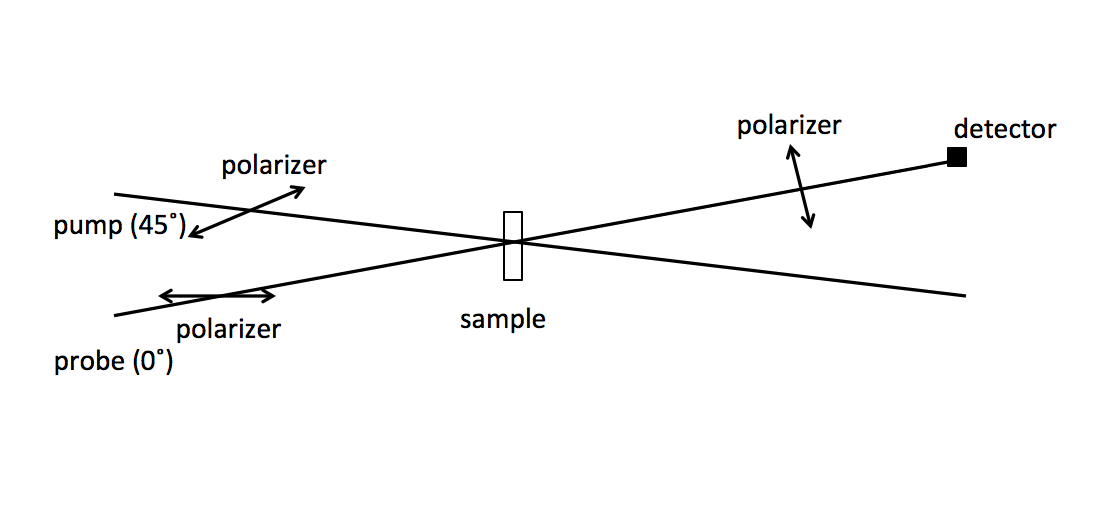In optical Kerr effect spectroscopy, a pump beam causes a temporary birefringence in a sample, while a probe beam measures the return of the sample to equilibrium.
The pump and probe are polarized linearly, 45˚ relative to one another, with the probe coming in horizontally. The birefringence causes a small elliptical polarization of the probe beam exiting the sample. A polarizer after the sample is adjusted to let vertically polarized light pass through.
I have some questions about this set up:
-Why must the polarizations of the pump and probe be different by 45˚?
-How does anything get through, namely the elliptically polarized light that constitutes the signal?
-And how does the intensity of the signal change due to the polarization-sensitive components?

